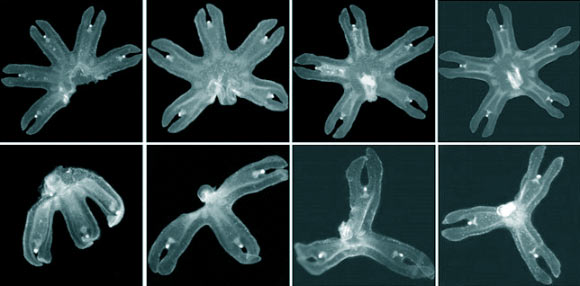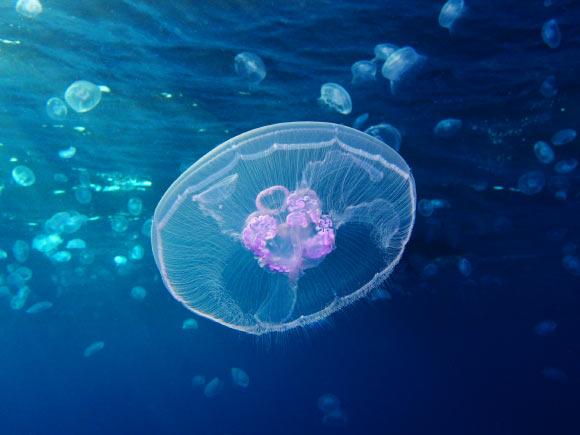In a new study published in the Proceedings of the National Academy of Sciences, marine biologists have found that, upon amputation, the moon jellyfish (Aurelia aurita) rearranges existing body parts and recovers radial symmetry within a few days.
Many marine creatures, including some jellyfish species, can regenerate tissues in response to injury, and this trait is important for their survival. If a sea turtle takes a bite out of a jellyfish, the injured animal can quickly grow new cells to replace the lost tissue. In fact, a marine animal called the hydra is a very commonly used model organism in studies of regeneration.
The authors of the new study – Prof Lea Goentoro from the California Institute of Technology and her colleagues from the University of Oxford, UK, and Institute of Physics in Taipei City, Taiwan – wanted to know if the moon jellyfish would respond to injuries in the same manner as an injured hydra.
They focused their study on the jellyfish’s juvenile, or ephyra, stage, because the ephyra’s simple body plan – a disk-shaped body with eight symmetrical arms – would make any tissue regeneration clearly visible.
To simulate injury the scientists performed amputations on anesthetized ephyra, producing animals with two, three, four, five, six, or seven arms, rather than the usual eight. They then returned the jellyfish to their habitat of artificial seawater, and monitored the tissue response.
Although wounds healed up as expected, with the tissue around the cut closing up in just a few hours, they noticed something unexpected: the jellyfish were not regenerating tissues to replace the lost arms.
Instead, within the first two days after the injury, the ephyra had reorganized its existing arms to be symmetrical and evenly spaced around the animal’s disklike body.
This so-called resymmetrization occurred whether the animal had as few as two limbs remaining or as many as seven, and the process was observed in three additional species of jellyfish ephyra (Chrysaora pacifica, Mastigias sp., and Cotylorhiza tuberculata).
“In response to arm amputation, the young jellyfish rearrange their remaining arms, recenter their manubria, and rebuild their muscular networks, all completed within 12 hours to 4 days. We call this process symmetrization,” the scientists wrote in the paper.

A single ephrya of Aurelia aurita was split into a three-armed section (bottom) and a five-armed section (top). Within two days of the amputation, neither section regenerated the lost arms. Instead, each section mechanically reorganized itself to reform radial symmetry with its remaining arms. Shown above, from left to right, are the ephryae immediately after amputation, then at 6 hours, 18 hours, and finally 50 hours. Image credit: Michael Abrams / Ty Basinger.
“We find that symmetrization is not driven by external cues, cell proliferation, cell death, and proceeded even when foreign arms were grafted on. Instead, we find that forces generated by the muscular network are essential. Inhibiting pulsation using muscle relaxants completely, and reversibly, blocked symmetrization.”
“Furthermore, we observed that decreasing pulse frequency using muscle relaxants slowed symmetrization, whereas increasing pulse frequency by lowering the magnesium concentration in seawater accelerated symmetrization.”
“In addition to adding to our understanding about self-repair mechanisms, the discovery could help engineers design new biomaterials,” Prof Goentoro said.
“Symmetrization may provide a new avenue for thinking about biomaterials that could be designed to heal by regaining functional geometry rather than regenerating precise shapes. Other self-repair mechanisms require cell proliferation and cell death – biological processes that aren’t easily translated to technology. But we can more easily apply mechanical forces to a material.”
_____
Michael J. Abrams et al. Self-repairing symmetry in jellyfish through mechanically driven reorganization. PNAS, published online June 15, 2015; doi: 10.1073/pnas.1502497112








